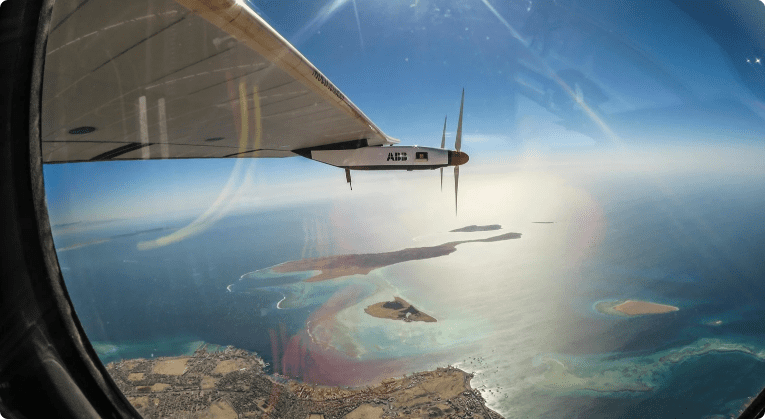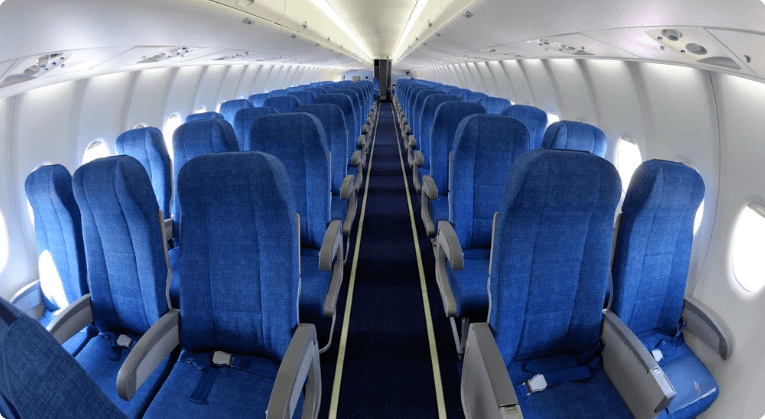Growing concerns about climate change forced the aviation industry to adopt sustainable technologies. The introduction of electric aircraft propulsion is a groundbreaking methodology that is changing the paradigm of aviation.
Utilizing electric energy, these new technological implementations provide light at the end of a tunnel with aviation sector environmental struggles.
For furthering our vision for a sustainable environment in the skies, electric aircraft propulsion will play a leading role by replacing fossil fuels and their greenhouse gas emissions.
This all-encompassing blog elucidates how electric aircraft propulsion works. Since some of the major airplanes that already incorporated this technology, we are going to list them here. By going through this blog, you will understand the potential it holds for tomorrow making a revolutionary invention.
Let’s learn all about electric aircraft propulsion, types of aircraft, and the future it holds.
What is Electric Aircraft Propulsion?
Electric aircraft propulsion is a technology that powers aircraft using only electricity. Yes, on these planes, fossil fuels aren’t used for environmental reasons. Since it removes carbon emissions and noise pollution, the future is electric!
In this aircraft, the propulsion system consists of electric motors that drive the propellers, also called fans, with the electricity stored in onboard batteries. This setup provides great advantages such as:
- Zero Direct Emissions: These electric aircraft produce no direct greenhouse gas emissions, hence making them environmentally friendly.
- Reduced Noise: The motors in these electric planes are quieter than traditional planes. Since we all want a peaceful environment, these planes are good to go.
- Higher Efficiency: Electric aircraft propulsion can convert electric energy into thrust. This is more efficient than combustion or traditional engines.
Overview of Electric Aircraft Propulsion

How Electric Aircraft Propulsion Works?
The important components of an electric aircraft propulsion system include:
- Electric Motors: Electric motors convert electrical into mechanical energy. This drives the aircraft’s propellers or fans.
- Batteries: The onboard battery packs store electric energy, which powers the motors.
- Power Electronics: Power electronics manage the flow of electric energy between batteries, motors, and other systems in an aircraft.
When the plane is in flight mode, the batteries supply electricity to the electric motors. This generates the thrust needed to propel the aircraft forward. We also have planes with hybrid systems that combine electric motors with traditional internal combustion engines. These act as generators to recharge the batteries.
Top Airplanes that Work on Electric Aircraft Propulsion
Understand this: electric aircraft are still in their early developmental stages, and yet there are the top three planes that have already conquered the sky:
- Pipistrel Alpha Electro: This is a two-seater training aircraft. It is one of the first fully electric airplanes to enter commercial production, with a range of up to 1 hour.
- Eviation Alice: This is a nine-seater electric commuter plane. It has a range of up to 440 miles. Alice is great for short-haul regional flights.
- Airbus E-Fan X: The Airbus E-Fan X is a hybrid-electric aircraft developed by Rolls-Royce, Siemens, and Airbus. The goal of this plane is to pave the way for future hybrid-electric commercial flights.

The Future of Electric Aircraft Propulsion
As the aviation industry works towards ambitious goals to provide sustainability, the future of electric propulsion is yet to be advanced. However, it is promising. Here are some key developments driving this process:
- Advancement in Battery Technology: The ongoing research into high-energy-density batteries will extend the range and endurance of the aircraft. These can be solid-state or lithium-air designs.
- Improved Electric Motor Efficiency: We are witnessing a new era of innovation in motor designs and materials to enhance power-to-weight ratios and overall efficiency, not just of the motor but of the aircraft too.
- Integrated Power Management Efficiency: We have sophisticated power electronics where the control system will optimize energy distribution for electric aircraft. The same goes for thermal management.
The technology breakthrough is that the aviation industry has a great vision for providing fully electric commercial airliners and urban air mobility solutions. This will become a serious business in the coming years.
Since sustainability is being embraced by the aviation industry, electric aircraft propulsion will play a pivotal role in shaping the future of air travel.
Final Takeaways: A Sustainable Future with Electric Aircraft Propulsion
Electric aircraft propulsion will change the game for commercial aviation. It will offer a sustainable, efficient, and quieter alternative to fossil-fueled engines. It supports the e-plane green technology, which uses onboard batteries and electric motors to spin props. This will be beneficial while taking off from an airport with local pollutants under a smog dome.
Battery technology breakthroughs, electric motor efficiency gains, and integrated power management systems are powering this innovation. With such innovations in place, the hypothetical image of 100% electric commercial airliners and urban air mobility solutions is now closer to reality!
- An Electric Future for Greener Airlines
Electric aircraft are not just an airy-fairy concept but an actual practical solution that is already flying.
Electric planes produce zero direct emissions and are therefore far better for the environment. They are essential to fighting climate change by reducing the aviation industry’s carbon gap.Electric planes have quiet motors, reducing noise pollution. This is especially a concern for folks living near airports who have traditional aircraft noise as an issue of significance.These include silent flight and, therefore, a completely reduced noise level compared to traditional internal combustion engines.
- Advances in Battery Technology
Battery technology will need to keep improving. Electric planes to fly longer distances will be equipped with high-energy-density batteries developed by researchers. Among them are the once-only dreams of solid-state and lithium-air designs.
More advanced battery technology would see electric planes service more routes. Hence, allowing them to become a practical mode of transport for your daily commute.
Another category that is gaining efficiency is electric motors. Advances in motor design and components are leading to better power-to-weight ratios. Therefore, it will allow electric aircraft to lift heavier weights without loss of performance.
- The Future Looks Bright for Air Travel
These are some of the latest innovations that are making 100% electric commercial airlines and urban air mobility viable. The era of electric propulsion for aircraft is on the rise. Its importance ensures that electric air travel is here to stay.
With the aviation industry seeking to achieve significant sustainability goals, it is vital for us to support electric propulsion to chart a cleaner and greener future for aviation.
In conclusion, electric propulsion for aviation is a true redshift. And if it delivers what others expect from it, we will be changing the way we fly. Electric planes hold the promise of not only reductions in emissions and noise but also efficiency.
So, switching to electric propulsion is a crucial part of the aviation business becoming more sustainable and less environmentally damaging.



